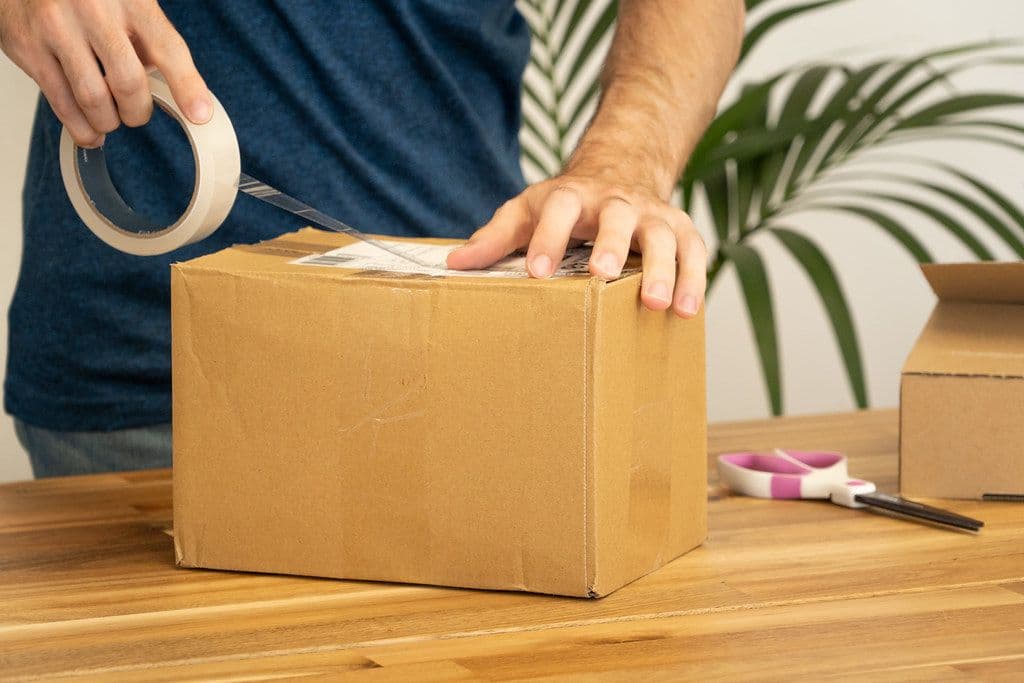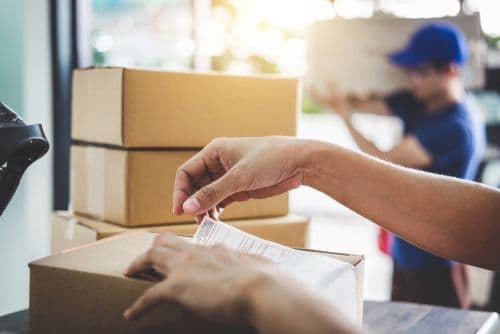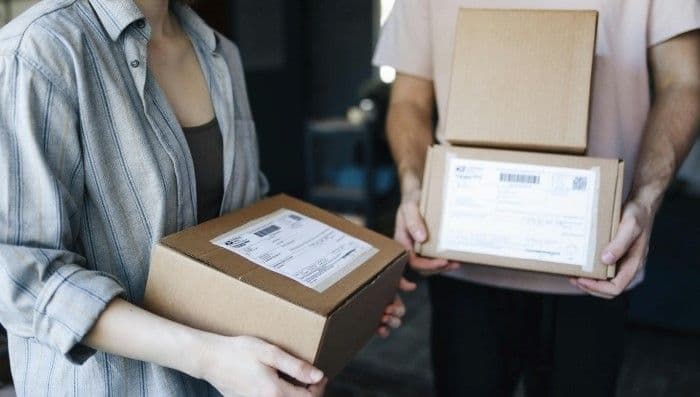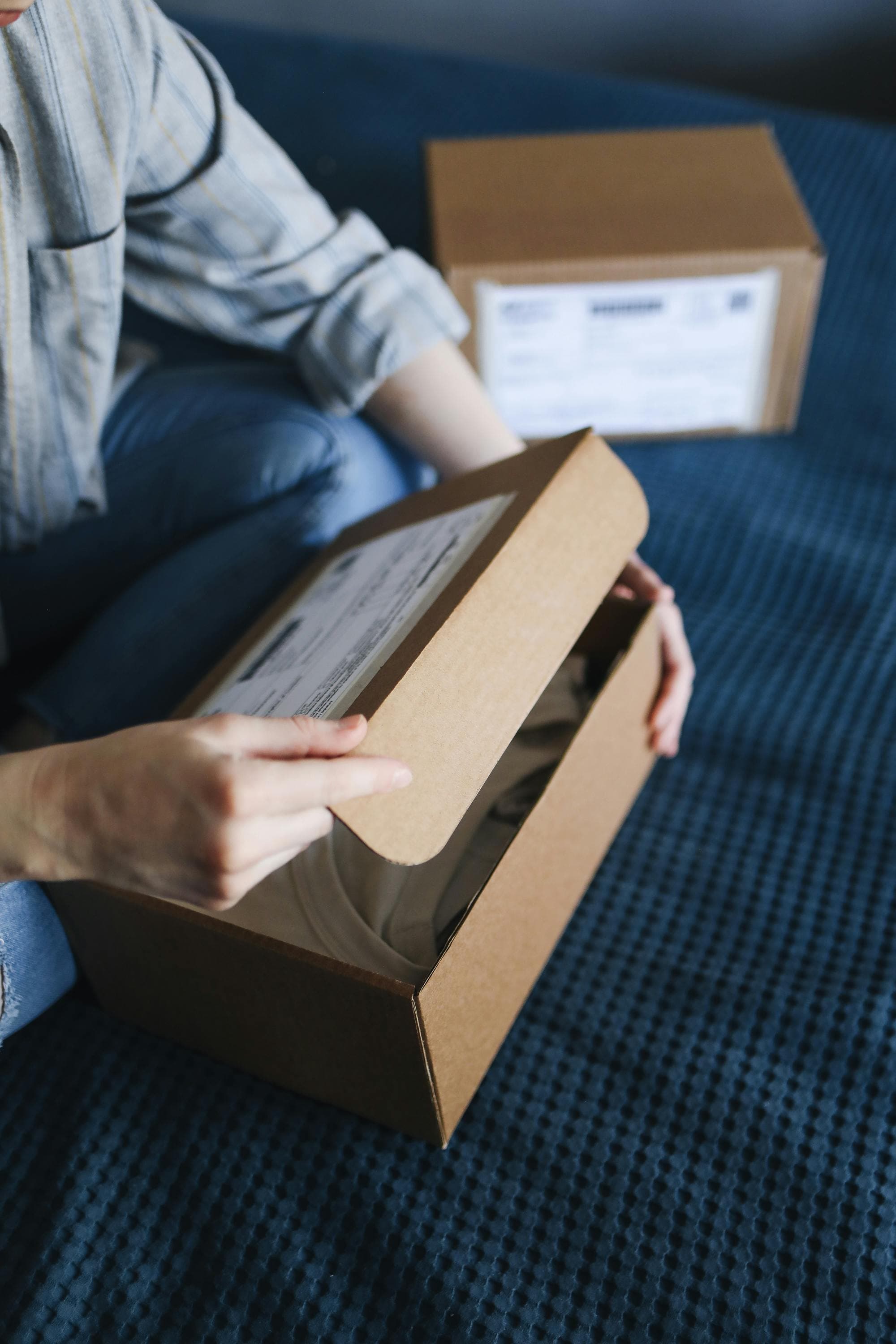We only believe in labels when it comes to shipping.
As the dawn of 2025 breaks, full of hopes and the promise of the ventures on the horizon, we bring another thing to think about in the world of parcels and logistics. This time, our tale begins just over three years ago, (it may feel like a lifetime ago due to all the things we’ve accomplished in this period, but in fact, it’s only about 36 months since it began). With its roots firmly planted in the dynamic borough of Brooklyn and our hearts, minds, and hopes all the way back in Ecuador. Here, a small startup (at the time more of a solo endeavor), was on the cusp of dispatching their very first order. The atmosphere was electric with anticipation and a hint of nervousness: the package was sealed, and the delivery bike stood ready, yet a vital piece of the puzzle was missing – the shipping labels!
While these particular episodes might read embellished, they are emblematic of a nightmare case for anyone in the delivery business. Picture the scenario: a courier arrives to transport a batch of unmarked packages, then chaos ensues. It's a nightmarish image that has plagued many couriers, waking up in cold sweats, haunted by the memory of indistinguishable boxes, all of them laughing at us from the darkness. In this world of fast-paced logistics, the lesson is clear and stark: the absolute necessity of clear, printed labels. Gone are the days when a mere pencil scrawl or fading ink could suffice to get a package from point A to point B. A mislabeled or unlabeled package is a vortex of extra costs and, worst of all, a waste of time for everyone involved.
This story doesn't just stop with a lesson learned. Let's delve deeper into the world of labeling and its crucial role. Consider another tale from our startup's early days. There was this one time when a special holiday order was prepared with great care – a selection of handcrafted chocolates destined for a loyal client. But, in the flurry of the festive season, the package was mislabeled and ended up at a construction site, dozens of blocks away from its intended upscale boutique destination. The confusion, the apologetic phone calls, the rush to rectify the mistake – it was a learning moment etched in our memory and became a cautionary tale for every new hire at the company.
Moving forward, let's talk about the transformative power of proper labeling. A well-crafted label is more than just a sticker; it's a beacon that guides your package through the complex maze of logistics. It contains vital information: the recipient's address, the sender's details, any special handling instructions, and tracking codes. This isn't just about avoiding mix-ups; it's about ensuring that each package is treated with the care and specificity it deserves. In the realm of e-commerce and global shipping, the label is your package's passport, its identity card, and its safeguard.
And what about those special items that need extra care? How do you ship delicate packages? Imagine shipping a vintage guitar, a family heirloom, or sensitive electronic equipment. Here, the label transcends its basic function, becoming a critical component that dictates the handling and safety of the item within. It's the difference between a cherished item arriving in pristine condition or the heartbreak of damage due to inadequate handling.
The evolution of labeling technology has been a game-changer. With the advent of digital printing, QR codes, and automated systems, provided by platforms like Stamps, UPS, and Shopify, the process has become more streamlined and foolproof. These innovations have not only simplified the task of labeling but have also introduced a new level of accuracy and efficiency. Now, with a few clicks, you can generate a label that is clear, durable, and equipped with all necessary information, including real-time tracking capabilities. This technological leap has been a boon for small businesses and individual shippers alike, democratizing access to high-quality labeling solutions.
What do you have to keep in mind when labeling a package?
It’s quite simple actually: Firstly, addressing your package accurately is paramount. This means writing clearly the recipient's full name, street address, apartment number (if applicable), city, state, and ZIP code. In New York, where buildings huddle closely and apartments stack sky-high, omitting an apartment number can lead to your package taking an unexpected detour. For the tech-savvy, online tools like USPS’s Click-N-Ship, FedEx Ship Manager, and UPS Internet Shipping offer user-friendly interfaces to input this information accurately and print labels from the comfort of your apartment or office.
Next, consider the packaging. It should be sturdy enough to withstand the journey through the city’s bustling mailrooms and delivery trucks. If you're reusing a box, ensure old labels and barcodes are removed or obscured. You can find lots of printable label templates online for free. If you have any questions, our team at Airpals will advise you on the best way to do this.
The contents of your package also need consideration. Fragile items require extra padding, and it’s wise to include a note inside with the return address and recipient’s address, just in case the external label gets damaged. If your package requires extra special care, be sure to include that information when requesting delivery from us, and our team at Airpals will make sure to ensure that extra care step.
Label placement is crucial. The shipping label should be placed on the top of your package, with the address visible and legible. This helps everyone make sure that the sorting facilities and delivery personnel can easily identify where the package is headed. If you’re printing labels at home, ensure your printer’s ink levels are adequate - a faded label is a recipe for misadventure. Transparent tape on top of the label can be used to protect the printed text.
Cost is a consideration not to be overlooked. Compare rates across different services to find the most economical option for your package size and destination (and then, when all things are considered, follow this link to begin your shipping process with us at Airpals, so we can give you a hand with all your doubts. Even that evasive question of “how to properly label a package?”)
How to label: A long process, told in a New York minute:
- Accurately address your package with full details.
- Choose a sturdy box and remove/obscure old labels if reusing.
- Pad and secure contents, especially if fragile.
- Use online tools (such as this nice template from Shopify, or this one at Sendcloud)
- Place the label on top, ensuring it’s visible and legible.
- Compare shipping costs online to find the best deal for you and your shipment.
Remember that after a label is printed and placed on a package, it typically has a shelf life of two weeks, so take that into account when sending the package.
Sometimes you will need constant deliveries, and you might want to consider getting yourself a nice label printer. But tech is not everything, let's not forget the human element in this story. Behind every label is a team of dedicated individuals: from the graphic designers who ensure the legibility and aesthetic of the label, to the logistics experts who analyze and optimize the route of each package. It's a symphony of skills and expertise, all converging to ensure that your package not only reaches its destination but also tells its own unique story along the way. Do things right, and let us be a cog in your machine taking care of the last, and most crucial element of this tale.
In conclusion, as you embark on your next shipping adventure with Airpals, remember the power of a well-crafted label. It's not just a piece of paper; it's a testament to your commitment to quality and efficiency. It's an assurance that your package, whether it's a simple letter or a box of fragile artifacts, is given the respect and attention it deserves. In the world of shipping and logistics, a well-labeled package truly is a happy package.
Now that you are an expert at labeling your packages, it is time to ship your orders. At Airpals, we're not just dropping off packages; we're delivering to trust and giving you exceptional service overall. Give us a try!
Frequently Asked Questions
Where to print shipping labels?
You can print shipping labels at home using a regular printer, at a local post office, or at a shipping company's store (like FedEx or UPS).
What "does shipping label created" mean?
This status means that a shipping label has been generated and the shipping process has begun, but the package has not yet been handed over to the shipping carrier.
How do shipping labels work?
Shipping labels contain vital information for accurate, efficient package delivery. Created through the carrier's system or shipping software, the label includes the sender and recipient addresses, tracking number, and shipping method. Once the label is printed and affixed to the package, the barcode is scanned at multiple points in the shipping network to update tracking information.
This means both the sender and recipient can follow the package's path until it reaches its destination. Overall, shipping labels ensure that packages are appropriately routed and delivered.
What size are shipping labels?
Standard shipping labels are typically 4 inches by 6 inches, but they can vary depending on the carrier and package size.
How long are shipping labels good for?
Shipping labels are usually good for use within a few days to a month after they are created. Check with the specific carrier for their validity period.
How much do shipping labels cost?
The cost varies depending on the weight, dimensions, shipping speed, and destination. You can usually calculate it on the carrier's website.
Can shipping labels be printed on regular paper?
Yes, they can be printed on regular paper and taped to the package, although adhesive labels are preferred for better durability.
How do shipping labels work?
A shipping label contains all the information a carrier needs to get your package to its destination, including addresses, tracking number, and postage.
How to print shipping labels for small business?
Small businesses can use online shipping services or carrier websites to create, purchase, and print labels in bulk or as needed.
How to print shipping labels with regular printer?
Select the shipping label option on the carrier’s website, enter the necessary details, and print it out on 8.5 x 11-inch paper or label paper.
Are shipping labels free?
The label itself is free to create, but you have to pay for the postage that the label represents.
Does shipping label size matter?
Yes, the label should be large enough to display all the necessary information and barcode clearly, and fit comfortably on the largest side of your package.




